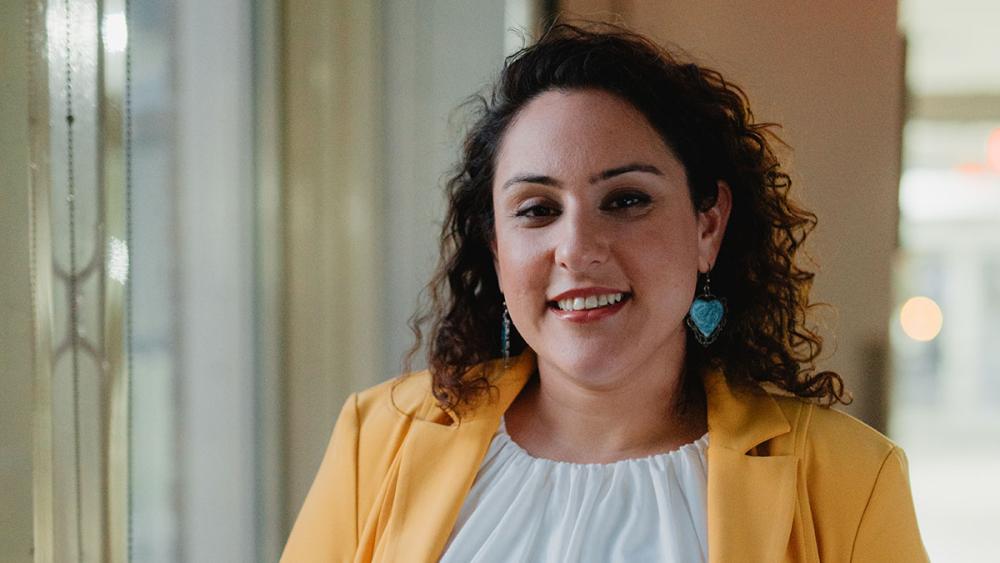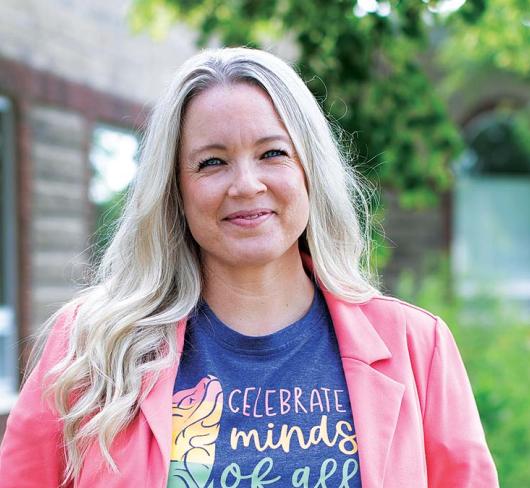
Photo by Ian Carleton
Supporting the Special Education needs of Ontario Students
Special education is meant to be a portable and adaptable service that follows students through their educational journeys. When our special education systems suffer cutbacks, so do our students’ educational trajectories.
An already stretched resource, special education services in Ontario feel increasingly more difficult to access while the need for them becomes even more dire. Long wait times, insufficient staffing and a general underfunding of Ontario’s social welfare programs has brought the integrity of our entire system to a crisis.
In the years preceding the COVID-19 pandemic, ETFO and other educator unions across Ontario were already engaging in mass mobilization to collect data about the frequency and severity of violence in schools. ETFO’s research indicated that at least 60 percent of educators had experienced attempts of violence against them by students. Additional data suggests a staggering seven-fold increase in violence experienced by educators over a 12-year period. To be clear, these numbers are from the years just before the world shut down due to a global pandemic. From the last 30 days alone, educators across the province can provide you with enough heartbreaking anecdotes to indicate that special education needs in a post-lockdown world are more complex, varied and frequent than before.
Our students are experiencing greater mental health challenges, the scope of which are rapidly changing all the time. Growing up in an era of ever-evolving technology, coupled with significantly decreased human interaction as a result of the pandemic, the social and emotional load of being a child has been tested immensely. Sadly, this often results in students experiencing overwhelming anxiety, which sometimes manifests as severe behaviours that can put themselves or others in harm’s way. In some cases, this can result in explosions of physical and verbal aggression. In other cases, the behaviours present as emotional withdrawal and disconnect.
Every ETFO member knows what these behaviours look like, sound like and feel like. We also recognize that this is a form of communication and stretch ourselves to process what our students mean to convey. We do this so often that it has almost come to be expected as the norm. What most do not understand is that while we are helping individual students navigate these challenges, we are putting the rest of our students’ instructional day on pause to preserve the dignity of a student in crisis. In some cases, this can mean asking over 30 children to independently carry on their day while we attend to the extraordinary needs of one who really needs us. This scenario should be presented at the beginning of any discussion about class size just to keep things in perspective.
As noble as our intentions are, we are not trained to provide long-term mental health therapies. Our goodwill towards students cannot be used as a Band-Aid for the shortcomings of a healthcare system that routinely ignores the mental health needs of children. While we appreciate lesson plans and videos about mental health, what we really need are appropriate and dedicated human resources to support our students whose learning goals are not being met due to behavioural and mental health needs.
While behavioural exceptionalities are garnering more discussion, we continue to see enormous needs in the areas of communication, intellectual, physical and autism exceptionalities. Every single student with an identified exceptionality deserves to be seen as a whole person with interests and strengths that are valued for more than just being possible job skills. As educators, we take great pleasure in getting to know our students so that we can facilitate creative programming that directly aligns with what brings them joy. To see educators beaming with pride as their students succeed is a marvelous sight that has inspired all kinds of art. However, what remains invisible in the background is just how much time, energy and skill is required to make these successes possible.
Special education staff create and execute individualized programming for each student in our care. We work with other staff in our school community to ensure there is consistency in the accommodations and modifications we put in place to make school accessible for our students. As trends in education have shifted away from the use of textbooks and workbooks, educators have to create educational content that meets the curriculum expectations, has differentiated entry points and is culturally relevant and responsive. On top of all this, educators still manage to dress up their lessons with engaging visuals and references to current events. Ask any teacher how they get all this done in a 45-minute preparation period and they’ll tell you that its not possible. Many of our prep periods are spent addressing the social-emotional needs of our learners. We take from our own personal time to craft the lessons that we teach our students, and this does not even include the time we devote to simply thinking about the lessons and how we want to teach them.
Through all this, we continuously reassess all our instructional material to ensure it suits our learners. At no time were we ever challenged to do this more than when we shifted to online learning during the COVID-19 shutdowns. It was incredibly daunting, and we did our best, but the challenges brought on by the pandemic shone a light on the numerous inequities faced by so many Ontario children. Students experienced huge gaps in their learning over the two-plus years of learning under lockdown. Families experienced financial and emotional uncertainty. Entire communities were affected. It’s as if the fabric of society ripped apart, including the safety nets relied upon by the most vulnerable.
Through all this, our students with the highest needs were the ones who suffered the brunt of our government’s failures. Ever since schools opened up, educators have been finding themselves taking on the traumas and fears of students who had to reimagine what it means to feel safe at school while trying to figure out how to teach curriculum in a whole new way all over again. The added layer of trying to teach entire cohorts of students who have only ever known life in a pandemic is an adventure unlike any other.
One would assume that the government might add new resources to help make up for the incalculable damage being done to the foundational years of our future citizens. However, it sadly comes as no surprise that Doug Ford’s regime abandoned the education sector in an already difficult time. By not providing enough human resources as we reset the entire landscape of education, we found ourselves burning out at unprecedented rates. ETFO members know how badly we were hemorrhaging staff during the 2021-22 school year with record numbers of “Failure to Fills.”
Abandoning and vilifying educators during a crucial time may have been a strategic move on the part of a government (such as Ford’s) aiming to set the stage for a crisis that could justify a stubborn belligerence against education sector unions in the future. Having no concern for the well-being and care of educators is directly detrimental to students and, ultimately, to Ontario as a whole.
Educators are asking to be treated with fairness and respect for our expertise in performing a vital community service. To place additional demands on us while also stripping us of resources is to rob our students of a safe space. An ideal environment for students – especially our most vulnerable – isn’t simply a matter of putting up nice posters and having access to cutting edge technology. We are the environment.
Working with children for even a short time makes us realize that the most effective environment is one of care. Splitting our time and attention between the myriad duties and responsibilities of a classroom along with the essential human needs of dozens of children, while also managing a curriculum, results in a lack of resources for our students. Again, when our special education systems suffer cutbacks, so do our students’ educational trajectories.
Elementary-age students cannot be expected to read their way out of emotional distress. They cannot just listen to a podcast or watch a video that will change their mindset. Students need strategies to be modeled for them explicitly, so they can learn to comprehend and interact with life and its challenges. For this, we need caring and competent teachers, DECEs, EAs, secretaries and principals who are not running on empty. We need more regulated healthcare professionals such as nurses, social workers, psychologists, speech-language pathologists, occupational therapists, blind/low vision specialists, deaf/hard of hearing specialists and other specialists available to build relationships with students and their families. Our entire system of education has suffered massive blows over the last few decades and COVID challenged the integrity of our system in unimaginable ways. We desperately need to feel like a full community again because nothing can replace the value of another competent and caring adult in the life of a child.
Despite all these challenges, to be an education worker is to be inherently optimistic for the future because we believe in the many possibilities our students can and will create for the world.
Amrita Kaul is a member of York Region Teacher Local.

